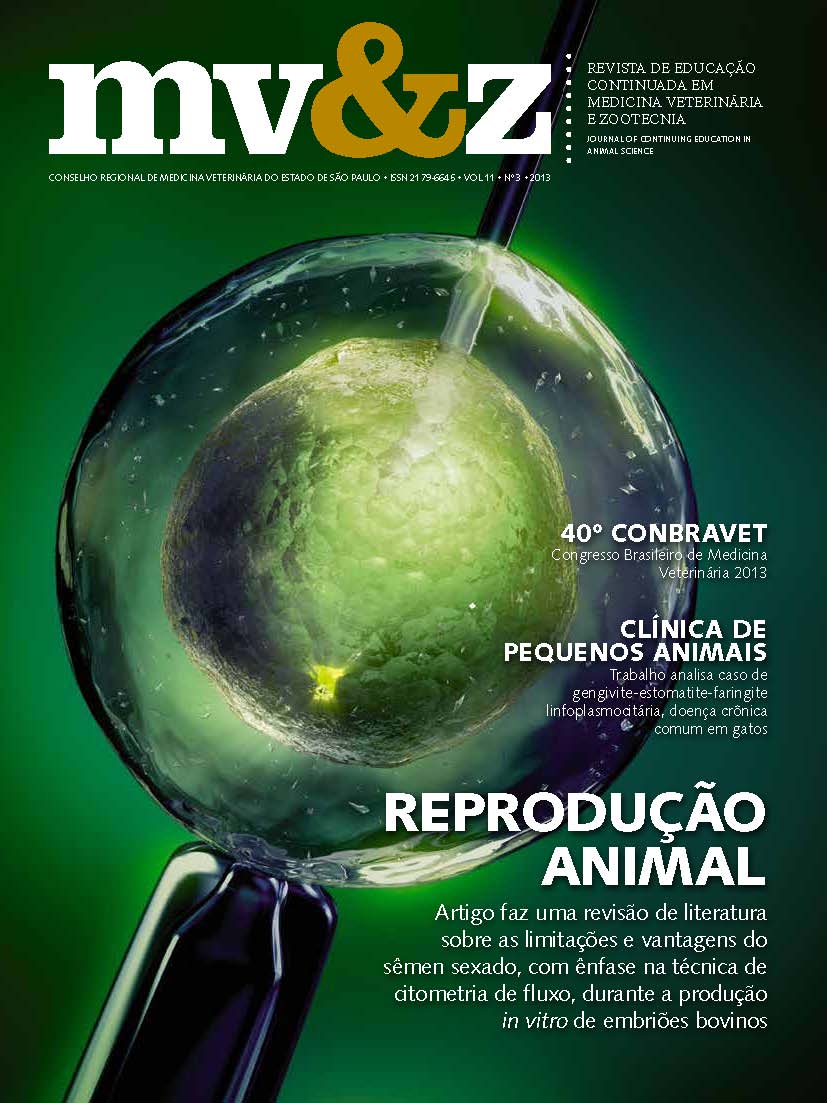Solubilization of the rabies virus glycoprotein using different detergents
Conteúdo do artigo principal
Resumo
Introduction: Rabies virus glycoprotein (RVG) is important in the biology and pathogenesis of rabies virus infection. This transmembrane RVG is highly immunogenic, inducing the production of neutralizing antibodies (VNA), the activation of helper T and cytotoxic T lymphocytes. The RVG may have several applications for both laboratory diagnosis and research of rabies disease. Aim: The production of rabies virus to the concentration and solubilization of glycoprotein. Methods: The challenge virus standard‐11 strain (CVS) was replicated on BHK‐21 cells. Supernatants from virus‐infected cells were harvested at 72 hours post infection, and the virions were concentrated by centrifugal filter (Amicon Ultra). The evaluations of viral suspensions with highest dilution with 100% of the BHK‐21 cells infected were performed by direct immunofluorescence. Three detergents (0,6% CHAPS, 2% Octyl s‐(+)‐glucopyranoside (OPG) and 0,1% Triton X‐100) in buffer (50 mM Tris‐HCl, 150 mM NaCl, 10% DMSO, 4 mM EDTA) were used to solubilize RVG from CVS. RVG was quantified using neutralization test and demonstrated by photos. Results and Discussion: The highest dilution, viral suspensions with 100% of BHK‐21 cells infected, corresponded 1:512, increasing the viral dilution in 256‐fold using Amicon column. The experimental data showed that the detergents Triton X‐100 were not as good as CHAPS and OGP in the solubilization of RVG. The results suggested that the technique of enhanced the concentration of viral particles was effective in solubilization of glycoprotein, thereby paving the way for purification this membrane protein. Thus, new methods may be developed for the diagnosis of rabies using G protein.
Detalhes do artigo
Seção
1. Autores mantém os direitos autorais e concedem à revista o direito de primeira publicação, com o trabalho licenciado sob a Creative Commons Atribuição-NãoComercial-SemDerivações 4.0 Internacional
2. Autores têm autorização para assumir contratos adicionais separadamente, para distribuição não-exclusica da versão do trabalho publicada nesta revista (ex.: publicar em repositório institucional ou como capítulo de livro), com reconhecimento de autoria e publicação inicial nesta revista.
3. Autores têm permissão e são estimulados a publicar e distribuir seu trabalho online (ex.: em repositórios instituicionais ou na sua página pessoal) a qualquer ponto antes ou durante o processo editorial, já que isso pode gerar alterações produtivas, bem como aumentar o impacto e a citação do trabalho publicado (Veja O Efeito do Acesso Livre);
